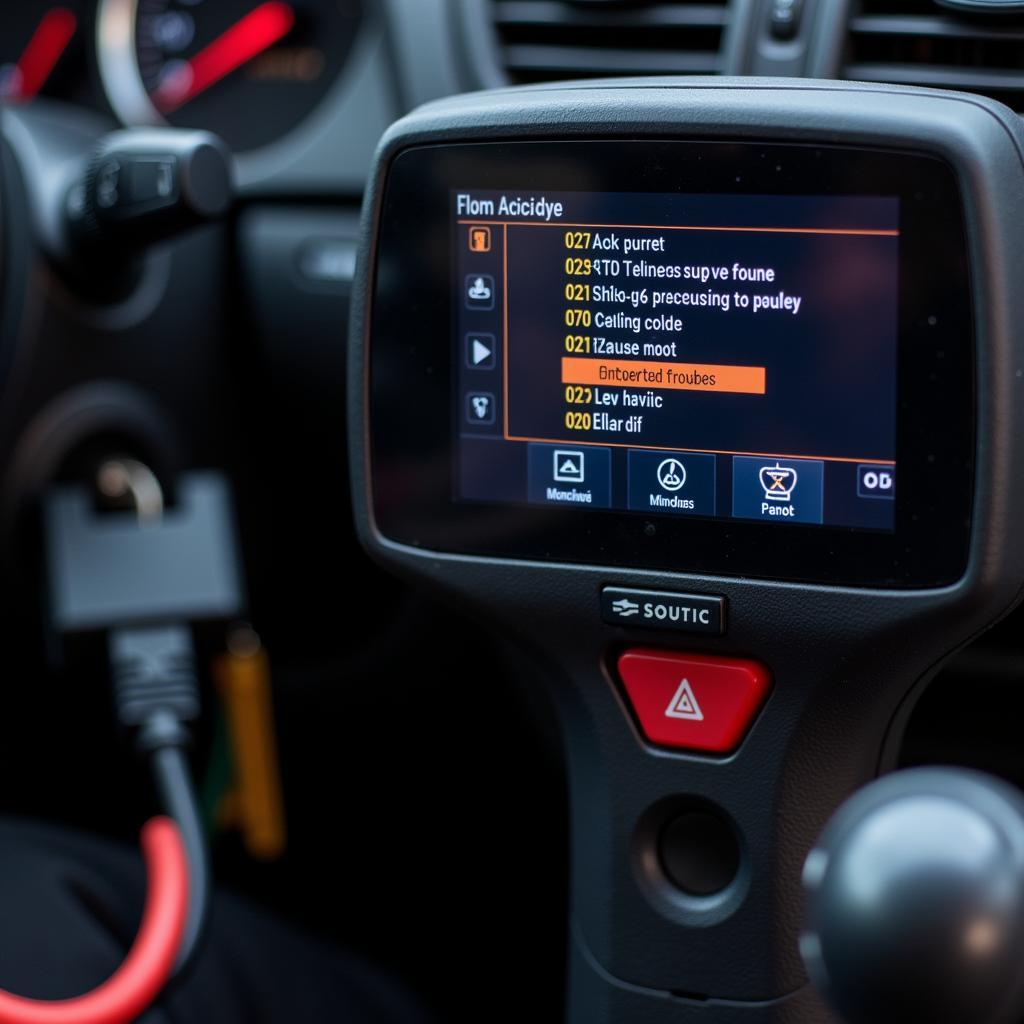Buying a used car can be a daunting task. You want to make sure you’re getting a reliable vehicle, not a lemon. That’s why having the right tools to bring to inspect a used car can make all the difference. A thorough inspection can reveal hidden problems and help you negotiate a fair price. Don’t rely solely on a flashy exterior and a smooth sales pitch – arm yourself with knowledge and the proper tools.
What Tools Should I Bring to a Used Car Inspection?
Having a pre-purchase inspection performed by a trusted mechanic is always the best course of action. However, a preliminary inspection with your own tools can save you time and money by weeding out problematic cars early on. Some essential tools to bring to inspect a used car include a flashlight, a tire pressure gauge, and a OBD-II scanner. These simple tools can reveal a lot about a car’s condition.
What are the best tools to bring to inspect a used car? Besides the basics, consider adding a few more items to your arsenal. A mechanic’s mirror can help you see hard-to-reach areas, while a magnet can check for body filler that might indicate previous accident damage. A small notepad and pen are invaluable for jotting down notes and observations. You can also bring tools to bring to inspect a used car to help you during the process.
 OBD-II Scanner Checking Car Diagnostics
OBD-II Scanner Checking Car Diagnostics
Why is a Flashlight Important When Inspecting a Used Car?
A powerful flashlight is crucial for inspecting dark areas like the engine bay, undercarriage, and inside the trunk. It allows you to check for leaks, rust, and other potential issues that might be hidden in the shadows. Even in daylight, a flashlight can be helpful for peering into tight spaces.
What kind of flashlight should I use? A bright LED flashlight with a focused beam is ideal. Consider a flashlight with a magnetic base, which can be handy for hands-free operation.
What Does a Tire Pressure Gauge Tell Me?
Checking tire pressure is a simple but important step. Uneven tire wear or significantly low pressure can indicate alignment problems or suspension issues. A quality tire pressure gauge is inexpensive and easy to use. Remember to check the recommended tire pressure listed on the sticker inside the driver’s side door jamb.
How Does an OBD-II Scanner Help?
An OBD-II scanner is a powerful diagnostic tool that can read trouble codes stored in the car’s computer. These codes can provide valuable insights into the car’s engine, transmission, and other systems. While a basic code reader can identify problems, more advanced scanners can provide live data and even reset certain codes. Milwaukee offers powerful tools suitable for many tasks, including checking car parts, which you can check out on our milwaukee tools for cars page.
 Mechanic Inspecting Used Car Undercarriage
Mechanic Inspecting Used Car Undercarriage
Beyond the Basics: Advanced Inspection Tools
For a more in-depth inspection, consider investing in some more specialized tools. A digital multimeter can be used to test the battery and electrical system, while a compression tester can check the health of the engine cylinders. These tools are particularly useful if you’re mechanically inclined or have experience working on cars.
“A pre-purchase inspection is an investment that can save you thousands of dollars in the long run,” says John Smith, ASE Certified Master Technician. “Don’t cut corners when it comes to inspecting a used car. A thorough inspection is essential for making an informed decision.”
Can I Use a Car Battery Bank for Power Tools During Inspection?
A portable car battery bank can be very helpful for powering your inspection tools, especially if you’re inspecting a car in a remote location. These banks also often have additional features, such as USB charging ports and jump-starting capabilities. Be sure to check out the car battery bank for power tools article for some useful tools.
“Remember, knowledge is power when it comes to buying a used car,” says Sarah Jones, Automotive Engineer. “The more information you have, the better equipped you’ll be to negotiate a fair price and avoid costly surprises down the road.”
Conclusion
Bringing the right tools to inspect a used car is crucial for uncovering potential problems and ensuring you’re getting a reliable vehicle. From a simple flashlight to a more advanced OBD-II scanner, these tools can empower you to make an informed decision and avoid buyer’s remorse. By following these guidelines, and taking your time to thoroughly inspect any potential purchase, you can significantly improve your chances of finding a great used car that will provide years of reliable service.
FAQ
- What is the most important tool to bring to a used car inspection? An OBD-II scanner is invaluable for diagnosing potential problems.
- Do I need to be a mechanic to use these tools? No, many of these tools are easy to use, even for beginners.
- What should I do if I find problems during the inspection? Use the information to negotiate a lower price or walk away from the deal.
- Can I inspect a used car myself, or should I hire a professional? A pre-purchase inspection by a trusted mechanic is always recommended.
- Where can I find more information about inspecting used cars? Check out DiagFixPro for detailed articles and guides.
Need help with your car diagnostic? Contact us via WhatsApp: +1(641)206-8880, Email: [email protected] or visit us at 910 Cedar Lane, Chicago, IL 60605, USA. Our 24/7 customer support team is ready to assist you. You might also find our resources on railroad car repair tools and wound care assessment tool helpful. Consider exploring related articles on our website for further insights.

Leave a Reply